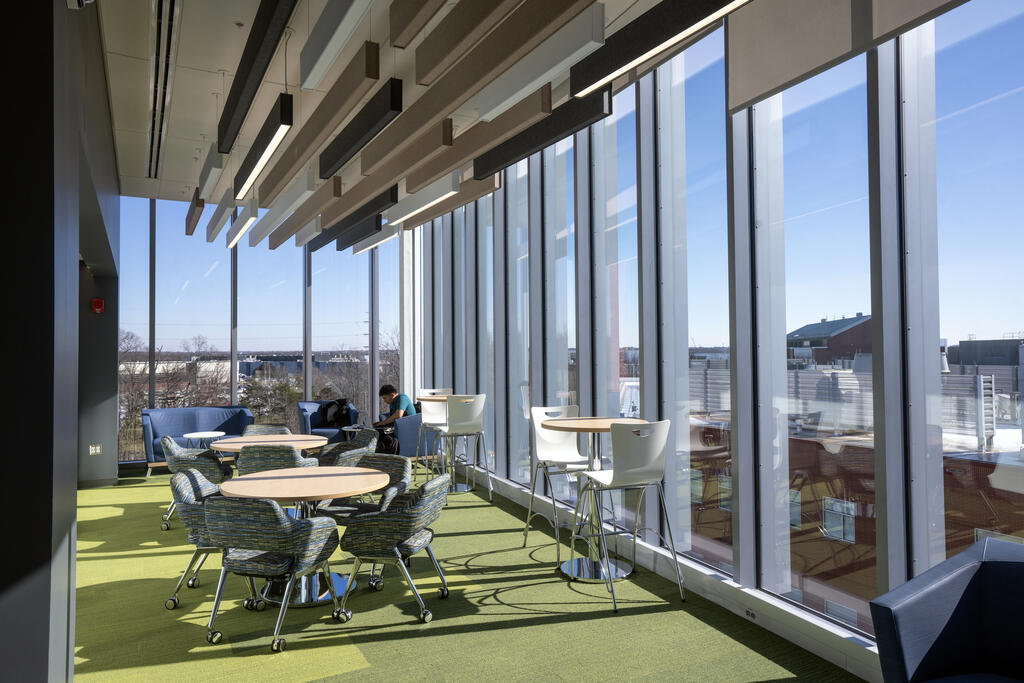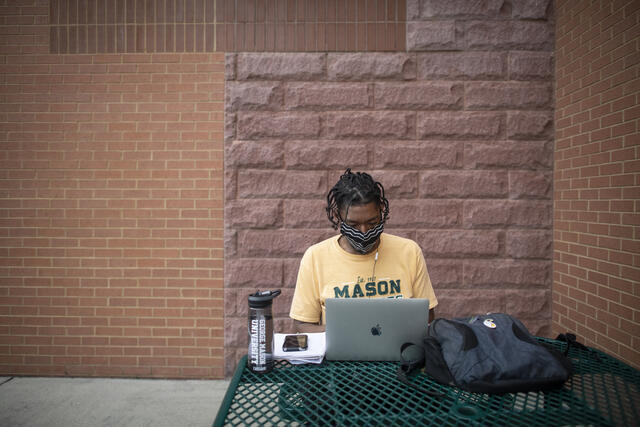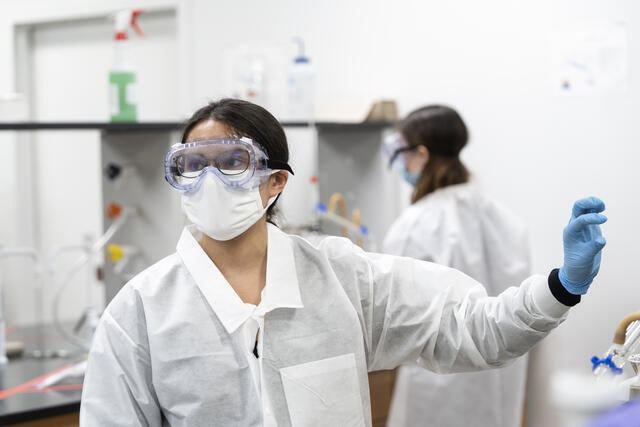Admission CTAs
COVID-19: Mason Impact
Think back to the early days of this pandemic: trying to understand what the SARS-CoV-2 virus was, how it spread, and how to keep safe--literally how to survive. We went into isolation, turning homes into offices and classrooms, at times separating from our family, friends, and community.
Brave healthcare workers identified symptoms and treated those infected. Our Math Maker Lab and Forensic Science teams created and distributed personal protective equipment, face shields, and masks to local first responders. We stocked the Patriot Pantry to feed the hungry, even making meals for those working around the clock to save lives, launched the Patriots Helping Patriots initiative to financially support our students in need and even had eight of our Enlisted to Medical Degree Prep Program (EMDP2) students graduated early to serve on COVID-19 medical military front lines.
The university utilized the 2020 spring break to scope and coordinate a massive ‘Pivot,’ shifting more than 5,200 classes to a virtual or hybrid learning format; tasking faculty and staff to revamp syllabi, develop new processes and methods to deliver the curriculum; working with Mason’s Stearns Center or GMU-TV to learn how to virtually deliver content via Blackboard, Zoom, Webex, or any method that offered students a way to understand the materials. We had to post, video, or mail coursework kits to students, whatever it took to deliver the content to our science community.
Despite the constraints of quarantine, our connections and need to share our science continued. Our Undergraduate Research Colloquium, admissions events, Galileo Science Café, ASSIP summer programs, ScienceConnect, Mason Science Series, student learning communities, and even graduations, all shifted to virtual event formats, as faculty and staff worked diligently to build scientific understanding and meaningfully celebrate milestones as best we could.
With the cry of “MaskONMason” and CDC and Mason safety protocols in place, our faculty, staff, and students worked together to safely return to campus.
For many, the transition was a tremendous challenge. Yet, our shift to this virtual operating environment afforded new opportunities to build global connections.
Our CMAI, Observatory, and CDS seminars, events, and colloquium series expanded to reach a worldwide audience into the thousands, bringing new opportunities for students to connect with global influencers within our virtual classrooms.
For some, research efforts had to painfully pause until outdoor activities and fieldwork could resume. For others, research efforts ballooned, over 100 Mason scientists continued research efforts, collaborating to establish global partnerships to develop vaccines, monitor COVID-19 spread and create data-driven tools to track the coronavirus, impacts on healthcare and education systems, even hospital bed usage and the virus’ various ripple effects.
These efforts will help Mason and our community turn the corner, with the hope of returning to campus in the fall becoming more of a reality than a dream.
Amidst this uncertainty, another important change was evolving. Mason established an ARIE Task Force, to address anti-racism, inclusion and equity within our community. Faculty, staff, and students came together to understand our gaps, identify priorities to close them and grow as the truly accessible, inclusive community we strive to be. During this effort, Spectrum, a Physics and Astronomy Department student group, formed focusing on mentorship, equity and social justice in science fields.
In December 2020, this group of students deployed an email survey to almost 300 students and faculty to explore faculty teaching choices then Spectrum and faculty leadership shared the results together, discussing gaps and best practices. Did we get it all right? Sometimes, yes. And sometimes, no. Throughout this process we collected feedback to capitalize on best practices and learn from where we may have fallen short. ARTICLE ONLY We are working hard to learn the lessons from this past year of sweeping change, good and bad, prioritizing new efforts to optimize our learning environments.
We will continue to encourage our faculty, staff, and students to bravely try new methods of teaching and research, to grow from the feedback and evolve our programs as our science community looks to establish our new normal.


